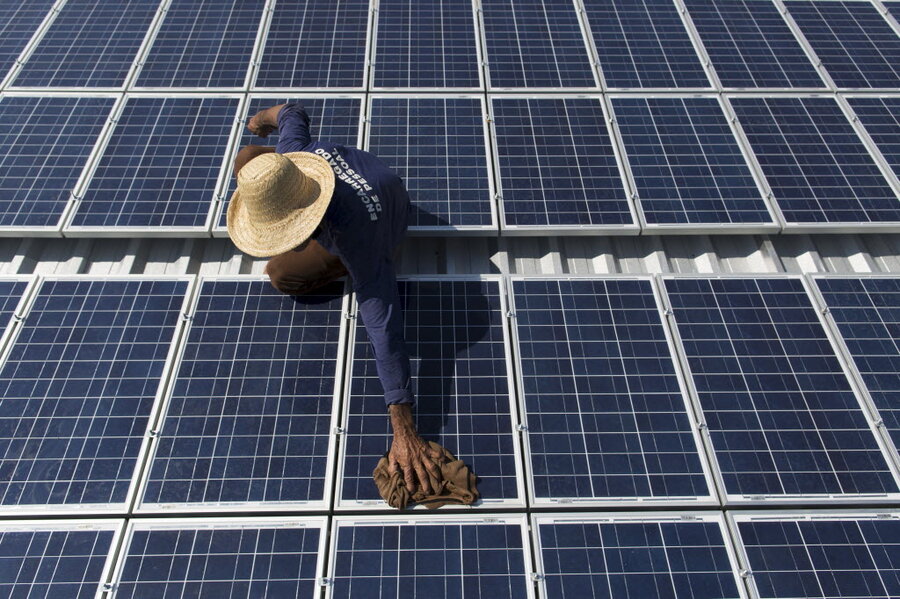Making cheaper solar panels by making less waste
Loading...
Solar photovoltaics can generate clean electricity, but until recently one major barrier to greater adoption is the fact that solar panels have been prohibitively expensive.
In recent years there have been technological advances in photovoltaic cells’ efficiency, and increased production has brought down their cost. But they remain relatively expensive in large part because fully half of the costly silicon wafers at the heart of solar cells are destroyed during production.
Now researchers at the Fraunhofer Institute for Solar Energy Research (ISE) in Freiburg, Germany, have developed a technology that cuts these losses in half and, at the same time, reduces fabrication energy costs by 80 percent.
Making silicon wafers requires a lot of time and energy, and the silicon waste only adds to the expense. Silicon costs about $17 per kilogram, meaning that about $9 worth of silicon is wasted in making solar cells because the process ruins approximately half the silicon.
But the Fraunhofer researchers say they’ve solved both the waste and energy problems. “[W]e are reducing material losses by 50 percent while using 80 percent less energy,” said Stefan Janz, the lead ISE researcher on the project.
Until now, making a solar cell starts with impure silicon that’s liquefied, then purified with the addition of chlorine, creating a material known as chlorosilane. With the addition of hydrogen, chlorosilane becomes highly pure chunks of polysilicon.
To turn polysilicon into the crystals needed for solar cells, the chunks are broken, melted at temperatures exceeding 2,600 degrees Fahrenheit, then allowed to grow randomly, sometimes into amorphous and therefore useless silicon, and sometimes into the crystalline form suitable for photovoltaic cells. The usable polysilicon is then molded into huge ingots, then cut with saws into small wafers.
Both the high heat used to melt the polysilicon, the random growing of the material and the silicon dust from the sawing cause great waste of an expensive resource. But the ISE method addresses all three causes of the waste, Janz says. The Fraunhofer method heats the chlorosilane under lower heat, about 1,800 degrees Fahrenheit, then mixes it with hydrogen. Lower heat translates into lower cost.
Next, the silicon is vaporized and allowed to flow past a crystalline silicon wafer, which acts as a kind of template that orients the silicon vapor to eventually become crystalline itself. “We don’t let the silicon just grow randomly,” Janz said.
This process drastically reduces silicon waste. It’s also economical because the “template” wafer can be reused dozens of times. It also gives the wafers their final shape, eliminating the need for wasteful sawing.
“In this way we get a very good monocrystal, which is the best type of crystal, and the wafers are of the same quality as those produced using conventional methods,” Janz said.
Material loss isn’t the only disadvantage of sawing. Franunhofer says sawn wafers can’t be thinner than 150 to 200 micrometers or they’ll shatter during cutting. Under the new manufacturing method, the wafers can be half as thin. This material savings alone reduces the cost of a solar cell by 20 percent.
Fraunhofer’s ISE team has created an offshoot company called NexWafe, which is expected to begin using the new technique to mass producing the wafers in late 2017.
Source: http://oilprice.com/
Original article: http://oilprice.com/Latest-Energy-News/World-News/Latest-Innovation-Could-Be-A-Game-Changer-For-Solar-Cell-Manufacturing.html





